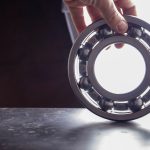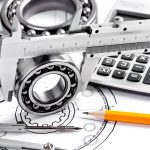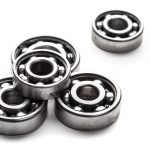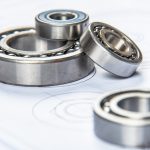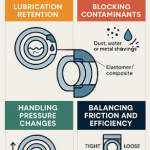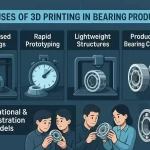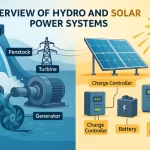Self-lubricating bearings, also referred to as maintenance-free bearings lubricate on their own while operating. The bearings are impregnated with lubricants within the sliding layer or pores and as the bearing operates lubrication is released through the pores in the sliding layer.
Self-lubricating bearings are preferred over traditional bearings when lubrication is difficult or costly.
Additionally, these bearings offer several benefits including:
- Eliminating periodic lubrication reduces maintenance effort and downtime.
- Longer bearing life and less wear as a result of regular lubrication.
- Designed for extreme operational conditions where external lubrication is impractical (extremely high or low temperature)
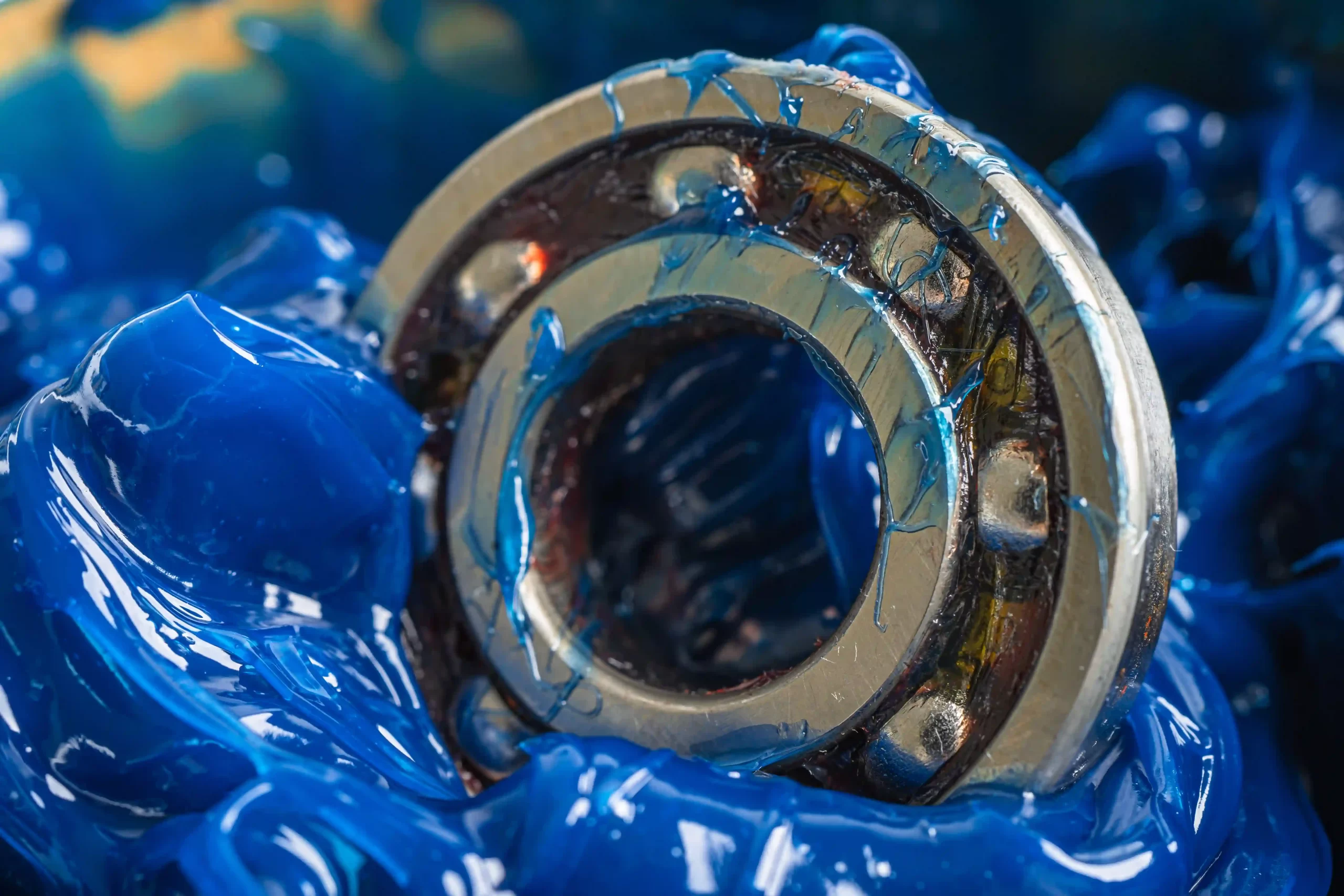
How Self-Lubricating Bearings Work ?
Self-lubricating bearings continuously supply lubrication while the bearings operate to reduce friction between the moving parts. They are designed to release lubrication gradually during operations. The working of self-lubricating bearings include:
- Storage: Self-lubricating bearings usually contain lubrication within their structure. Bearings made out of polymer, and porous metal contain lubricants within the structures, while bearings made out of metal contain lubricants in the tiny pores.
- Release: When the bearing is in motion, the heat and pressure causes the lubricants to mitigate to the surface, creating a lubricating film and reducing friction and wear.
- Reabsorption: Post-bearing operation, the lubrication gets reabsorbed into the bearing material, avoiding wastage and extending service life.
- Continuous Process: The process of releasing and reabsorption is a continuous process ensuring a long-term, maintenance-free operation.
A common misconception about self-lubricating bearing is that it does not require additional lubrication throughout the life or they are lubed for life. However, the lubrication eventually runs out, the lubrication is used and needs to be replaced. The bearings are lubed for a long time, not for a lifetime.
Self-Lubricating Technology in Plain Bearings & Bushings
The word self-lubricating is mainly linked with bushing and plain bearings as they are designed to function without the need for any additional or external lubrication. In both areas of application, self-lubrication enhances durability, reduces maintenance needs, and improves performance. Self-lubricating plain bearings and bushings are widely used in automotive components, industrial machinery, medical devices, aerospace, and more.
- Plain Bearings: These bearings are designed from oil-impregnated metals, PTFE, graphite-lined surfaces, and more. These bearings are known to reduce friction and wear without the need for external lubrication. conveyor belts, precision instruments, robotic arms, hydraulic systems, etc are fitted with self-lubricating plain bearings.
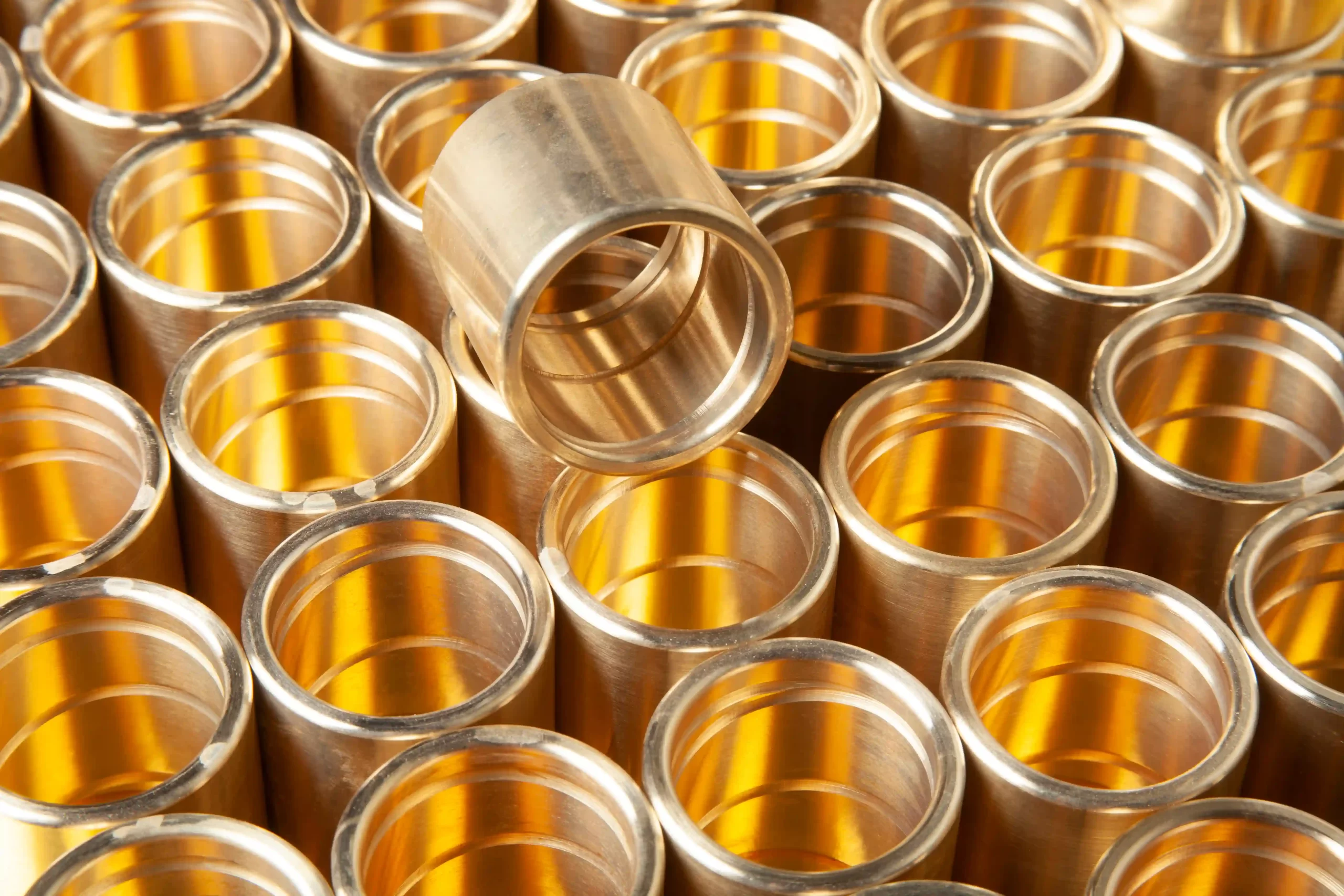
- Bushings: Bushings are small tube-shaped bearings designed to help parts move smoothly. Bushings are usually made from materials like oil-impregnated bronze or PTFE, which release lubrication as they rotate.
Types of Self-Lubricating Bearings
Self-lubricating bearings are made out of different materials and designs depending upon the application and operating condition.
- Metal-based Bearings: Metal-based bearings are the most commonly used self-lubricating bearings. These bearings are made out of bronze and designed with interconnected pores which store and release lubrication through capillary action during operation. Electric motors, industrial machines, and automotive parts are usually fitted with metal-based self-lubricating bearings.
- Polymer-based Bearings: Polytetrafluoroethylene (PTFE), nylon, and other materials are used to make polymer-based bearings. Continuous low-friction operation is provided by the solid lubricants embedded in the material. Food processing industries, medical devices, etc all make extensive use of polymer-based bearings.


- Carbon-graphite Bearings: These self-lubricating bearings are made out of carbon and graphite mixture. Carbon-graphite bearing is ideal for high-temperature & chemical resistant applications. These types of bearings are used in pumps, steam turbines, and chemical processing equipment.
- Sintered-metal Bearings: Sintered-metal bearings are based on powder-metallurgy technology. It is one of the sliding bearings with high porosity (20-25% in volume), impregnated in a lubricant oil. Sintered metal bearings are suitable for high production rates and are designed to precision tolerances. These bearings are widely fitted in small motors, machine tools, aircrafts, automotives, construction equipment, etc.
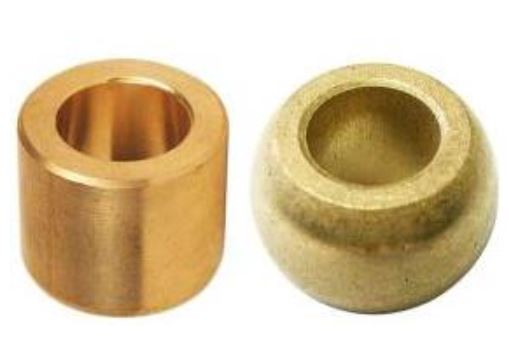
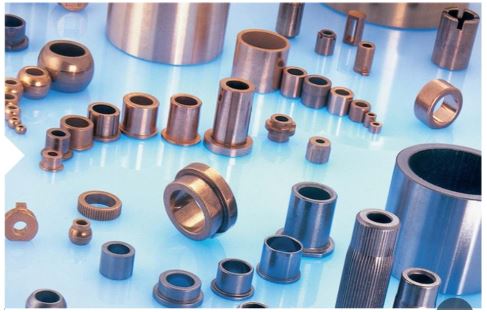
Bimetallic Bearings: A bimetallic bearing is an oil free lubricating bearing. The bearing is based on a steel backing, and the surface is sintered with led-tin bronze alloy.The steel backing in such bearings provide strength and rigidity. Such bearings are widely preferred for high load capacity, have good chemical resistance, and can sustain a wide range of temperatures.
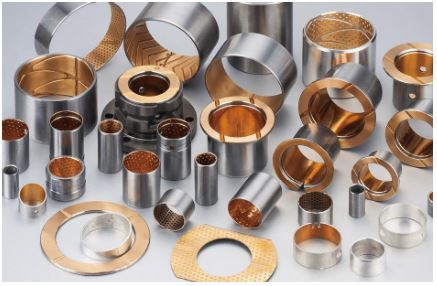
Solid Oil Bearing: Solid oil bearings are filled with a solid, porous resin that is impregnated with lubricating oil. As the bearing rotates the lubricant is released through capillaries to ensure its smooth running. This type of bearing is used where there is high centrifugal force or vibration.
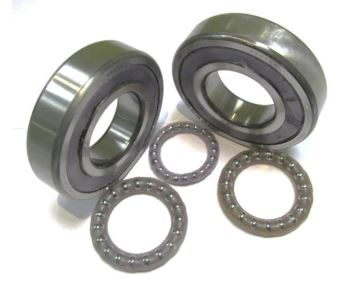
Benefits of Using Self-Lubricating Bearings
- Lower Maintenance Requirement: The key advantage of using self-lubricating bearings is that they do not require any additional oiling device or grease resulting in lower maintenance cost and reduced machine downtime.
- Cost-Efficient: Using self-lubricating bearings reduces the need for labour costs, and eliminates the need for a lubrication system resulting in reducing overall operational cost.
- Suitable for Harsh Environment: Self-lubricating bearings are designed to work in extreme temperatures, underwater, and other extreme conditions where traditional lubrication is impractical.
- Extensive Lifespan: It’s a fact that bearings last longer if they are lubricated well. Self-lubricating bearings operate under continuous lubrication leading to minimal wear and reduced friction resulting in extensive bearing lifespan.
- Clean Operation: Self-lubricating bearings are designed to avoid lubricant leakage thus making them ideal for food processing, medical devices, etc.
- Smooth Operation: The continuous lubrication mechanism of self-lubricating bearings helps improve the overall operation of equipment or machines equipped with such bearings by reducing vibration and noise.
Applications of Self-Lubricating Bearings
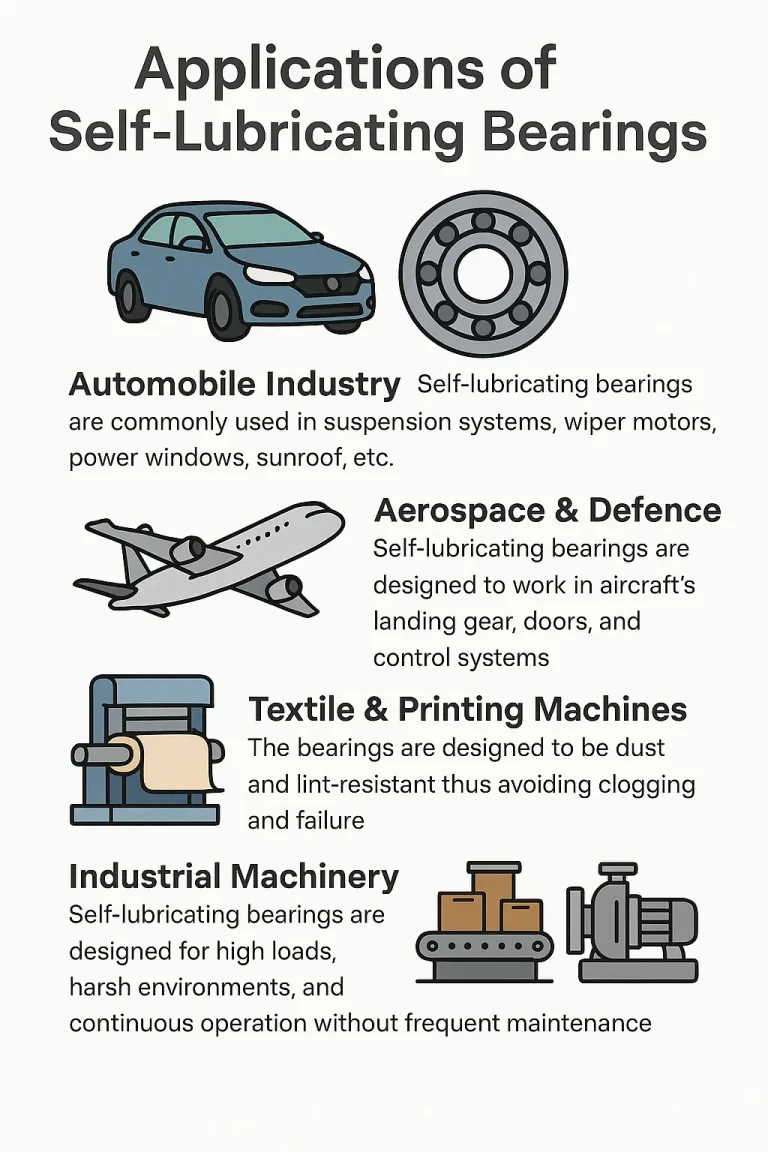
- Automobile Industry: Self-lubricating bearings are commonly used in the automotive industry specifically in suspension systems, wiper motors, power windows, sunroof, etc. Self-lubricating bearings in automobiles ensure reduced maintenance and longer service life.
- Aerospace & Defence: Self-lubricating bearings are designed to work in extreme conditions and, therefore, are preferred in aircraft’s landing gear, doors, and control systems.
- Textile & Printing Machines: The bearings are designed to be dust and lint-resistant thus avoiding clogging and failure. In the textile and printing industry with continuous production lines where stopping for lubrication is impractical, self-lubricating bearings are preferred.
- Industrial Machinery: Self-lubricating bearings are designed for high loads, harsh environments, and continuous operation without frequent maintenance, thus making it a preferred bearing for conveyors, pumps, and gearboxes where frequent lubrication is difficult.
Self-Lubricating Bearings vs. Traditional Bearings
- Requirement for Lubrication: While traditional bearings need to be lubricated on a regular basis, self-lubricating bearings have lubrication built in and don’t require periodic lubrication.
- Maintenance: Regular maintenance including lubrication, cleaning, and inspection is required for traditional bearings, whereas self-lubricating bearings have low maintenance requirements thus reducing machinery downtime.
- Durability: The durability of bearings is heavily impacted by lubrication. Therefore in traditional bearings, the risk of premature failure is higher if they are not adequately lubricated whereas self-lubricating bearings are constantly lubricated which lowers wear and friction leading to increased durability.
- Operating Conditions: Self-lubricating bearings are designed to work in extreme temperatures, wet environments, etc while traditional bearings to work in extreme conditions require frequent lubrication and maintenance.
- Load Handling: Traditional bearings are designed to handle extreme loads effectively while self-lubricating bearings have lower load handling capacity.
- Friction: Since self-lubricating bearings are under continuous lubrication, there’s low friction and reduced energy consumption, whereas traditional bearings can have higher friction if not properly lubricated.
FAQ's
What are lubricant-free bearings?
Other names for self-lubricating bearings include greaseless lubricant-free and maintenance-free bearings.
Do self-lubricating bearings last long?
The operating load, temperature, and bearing application environment all have an impact on a self-lubricating bearing’s lifespan.

